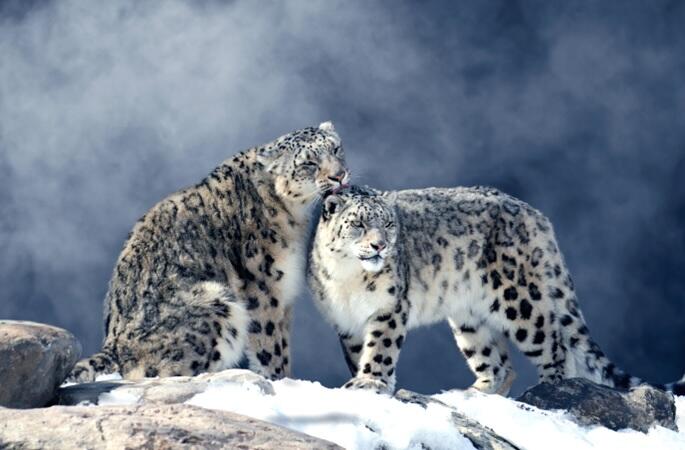Animals of the family Felidae are considered to be obligate carnivores and have morphological, physiological, and behavioral characteristics specialized for the consumption of the flesh of other animals. However, they are well known to consume plants in the wild or in captivity. Why do felids eat plants despite their low ability to utilize plants as a source of nutrients? Various hypotheses have been proposed for the roles of plant materials consumed, including the provision of supplementary nutrition and water, disease and parasite control through medicinal ingredients, and the promotion of digestion; however, no clear reason has yet to be clarified.

The snow leopard is a felid that inhabits the alpine regions of South and Central Asia. Feces of 24 out of 41 extant felid species have been reported to contain plants. In particular, snow leopard feces are known to frequently contain them. A research team led by Kyoto University collected 90 fecal samples from wild snow leopards and 36 fecal samples from other mammals in the Sarychat-Ertash Reserve in Kyrgyzstan in Central Asia. DNA was extracted from feces, and DNA metabarcoding analysis was used to comprehensively identify vertebrates and plants in feces. As a result, species of the genus Myricaria (a small genus of deciduous shrubs or semi-shrubs found in areas from Spain to Siberia and China) were found most frequently in snow leopard feces. Notably, Myricaria species were found frequently in samples where no prey animals were detected, suggesting that snow leopards may eat these plants when hungry.
This is the first study to evaluate the association between prey animals and plants in snow leopard feces. Although this study did not provide an answer to the question of why they consume plants, the comprehensive data on prey animals and plants detected in the feces of snow leopards and other mammals in the same area will help in formulating hypotheses and guiding future research to understand the adaptive significance of plant-eating behavior in felids. The findings are also expected to enhance snow leopards' captive environments and conservation planning of their natural habitats and were published in the Royal Society Open Science.
Journal Information
Publication: Royal Society Open Science
Title: Metabarcoding analysis provides insight into the link between prey and plant intake in a large alpine cat carnivore, the snow leopard
DOI: 10.1098/rsos.240132
This article has been translated by JST with permission from The Science News Ltd. (https://sci-news.co.jp/). Unauthorized reproduction of the article and photographs is prohibited.




